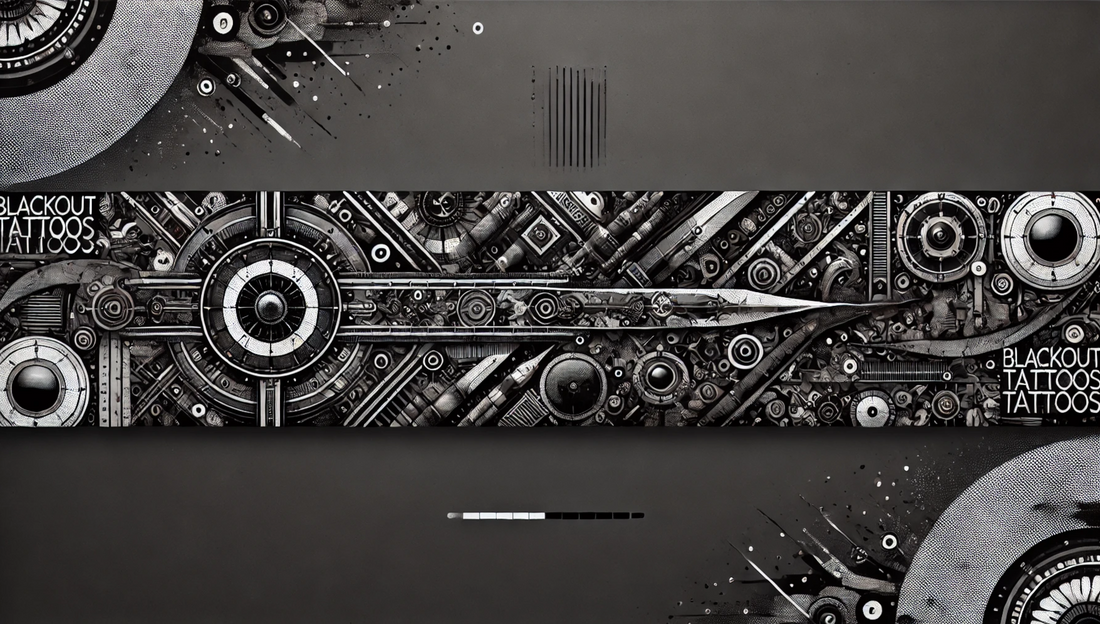
Blackout tattoos are an intense and visually impactful form of body modification that involves covering large sections of the skin, such as the arms, legs, or back, with dense black ink. This bold style creates a dramatic, all-black appearance that stands out for its sheer intensity. Historically, blackout tattoos trace their roots to various ancient cultures, including Polynesian, South Asian, and African societies, where such designs often symbolized power, identity, or social status.
In contemporary times, blackout tattoos have grown in popularity, both for their striking aesthetic and their practical use in covering up existing tattoos. However, due to their permanent nature and the significant commitment they require, these tattoos have sparked considerable discussion among tattoo enthusiasts and professionals alike.
Origins and Evolution of Blackout Tattoos
Although the use of black ink in tattoos has been practiced for centuries, particularly within tribal communities, the modern concept of blackout tattoos is relatively new. Traditionally, tribal cultures used black ink extensively in their body art, often as part of rituals or as a marker of rank within the community. Today, blackout tattoos have evolved into a distinct style, embraced by those looking to make a strong visual statement or to cover up previous tattoos.
This contemporary iteration of blackout tattoos became popular as tattoo artists started exploring new creative possibilities by using large areas of black ink. This technique presents a modern twist on classic tattooing while also serving as an effective method for covering up old, unwanted tattoos with a striking new look.
Design Styles in Blackout Tattoos

While the hallmark of blackout tattoos is their solid black coverage, there are several design variations that allow for personalization and creative expression:
- Total Blackout: This approach entails saturating large portions of the skin with black ink, creating a bold and unified appearance.
- Negative Space Patterns: By leaving parts of the skin uninked, artists can create intricate designs or patterns within the black ink, adding a layer of complexity and interest.
- White Ink Accents: Once the black ink has healed, white ink can be added to create striking contrasts and detailed designs on top of the black background.
- Geometric and Abstract Designs: Certain blackout tattoos integrate geometric forms or abstract motifs into their design, resulting in a contemporary and vibrant look
Pros and Cons of Blackout Tattoos
Advantages:
- Effective Cover-Up: Blackout tattoos are an excellent solution for concealing extensive, older tattoos that are challenging to erase or modify.
- Bold Visual Impact: The intense, all-black appearance of these tattoos makes them a standout choice for individuals who want a striking and memorable design.
- Customization Potential: By integrating negative space, white ink, or geometric patterns, blackout tattoos can be tailored to suit a variety of aesthetic preferences.
Disadvantages:
- Pain and Time: Given the extensive coverage required, blackout tattoos often involve longer and more painful sessions compared to smaller tattoos.
- Permanent Decision: The depth and density of black ink make these tattoos difficult to alter or remove, requiring a strong commitment to the design.
- Complex Healing Process: The aftercare for blackout tattoos can be more demanding, requiring careful attention to ensure proper healing and long-term color retention.
Taking Care of Your Blackout Tattoo
Ensuring proper aftercare is crucial for your blackout tattoo to heal properly and retain its vivid look. Here are some guidelines for post-tattoo care:
- Follow Artist’s Instructions: Always stick to the aftercare advice given by your tattoo artist to ensure effective healing.
- Maintain Cleanliness: Carefully cleanse the tattooed area using antibacterial soap and lukewarm water to avoid infections.
- Regularly Hydrate the Skin: Apply a recommended moisturizing ointment to keep the skin hydrated and aid the healing process.
- Shield from Sunlight: Protect the tattoo from direct sunlight to prevent fading, or apply sunscreen specifically made for tattoos.
- Avoid Scratching: Resist the urge to scratch or pick at the tattoo during the healing process, as this could cause scarring and uneven healing.
* For more information on the healing process, check out our article:
"The Healing Journey of a Tattoo: What to Expect"
Essential Tools and Techniques for Blackout Tattoos
Creating a successful blackout tattoo requires specialized tools and techniques:
- Dense Black Ink: The quality of the black ink used is crucial for achieving a deep, uniform coverage that stands the test of time.
- Proper Needle Selection: Tattoo artists use various needle types to outline, shade, and fill large areas. For blackout tattoos, the right needle configuration ensures efficient and consistent coverage.
- Pain Management: Due to the extensive coverage and potential discomfort, some clients may opt for numbing creams or sprays to make the process more tolerable.
- Aftercare Products: Maintaining the integrity of a blackout tattoo requires proper aftercare, including the use of antibacterial soaps, moisturizing ointments, and sunscreens to protect the tattoo during healing.

